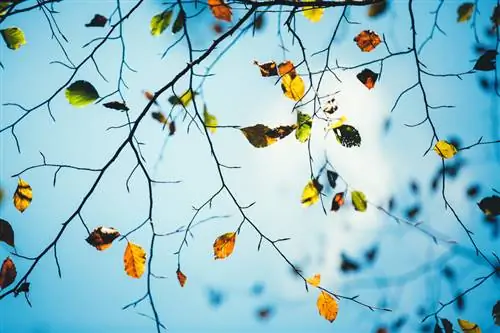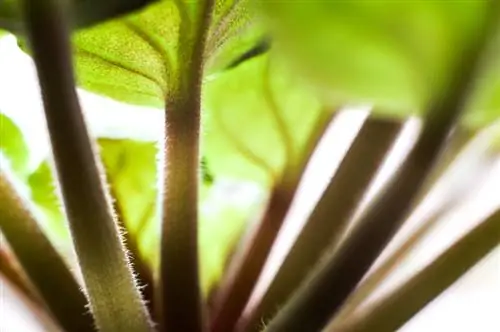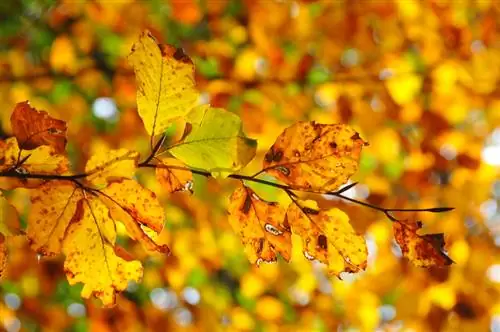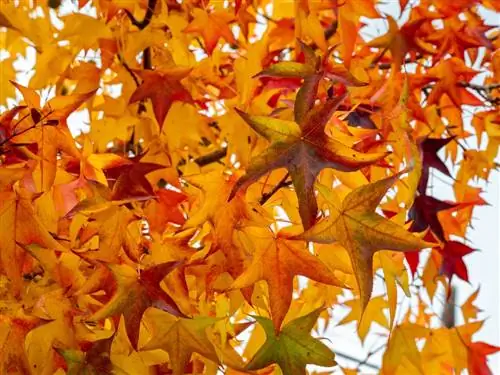- Author admin [email protected].
- Public 2023-12-16 16:46.
- Last modified 2025-01-23 11:20.
Common beech hedges are very robust and not susceptible to diseases and pests. Problems mainly occur in an unfavorable location or in poor climatic conditions. How to recognize and treat beech hedge diseases.
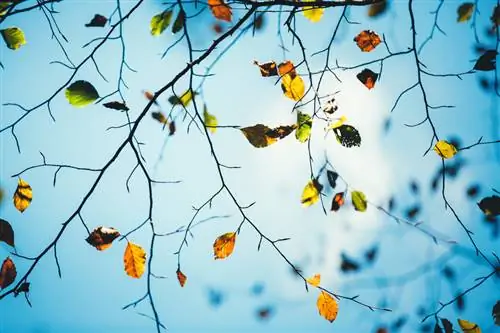
What diseases and pests occur on beech hedges and how are they treated?
Diseases and pests on red beech hedges include beech aphids, beech leaf gall midges and fungal diseases such as leaf spot fungus. For prevention and treatment, infected shoots should be removed, leaves disposed of, hedges trimmed regularly and good conditions for beneficial insects created. Chemical agents should only be used in emergencies.
Diseases and pests that cause problems for beech hedges
- Beech aphid
- Beech leaf gall midge
- Mushrooms / leaf spot fungus
Detecting and treating fungal diseases
Fungal diseases occur more frequently when the location is very moist or too dry. Fungal infestation often occurs, especially in rainy summers. The leaves get spots, turn brown and fall off.
A fungal infestation does not permanently damage the beech hedge, but makes it very unsightly.
Cut out infected branches and dispose of them along with the fallen leaves. Make sure that the beech hedge never dries out, but also that it is never too moist.
What to do about pests on the beech hedge?
Beech aphids, also known as beech ornamental aphids, can hardly be seen with the naked eye. They become noticeable through a change in the leaves. They curl up and dry up.
If there are thickenings on the leaves, the beech leaf gall midge is at work. It is not particularly harmful and does not necessarily need to be fought.
It is important to know that the pests overwinter in the leaves of the beech hedge. Cut out infected shoots and collect the leaves. The infestation usually only lasts for one season.
Use chemical agents only in emergencies
There are chemical products on the market for all diseases on beech hedges. They are harmful to bees and beneficial insects. Therefore, they should only be used in emergencies and strictly according to instructions.
How to prevent illnesses
Frequent trimming of beech hedges is a very good way to prevent disease. This limits the occurrence of germs and pests.
Dispose of diseased leaves in the trash can, not in the compost. Clean garden tools carefully after each use.
Create good conditions for beneficial insects such as lacewings, ladybirds and hover wasps. They are true masters of pest control.
Tip
In contrast to common beech hedges, hornbeam hedges suffer more often from powdery mildew, especially when it is too dry or too moist. A light infestation can be treated with diluted milk.

